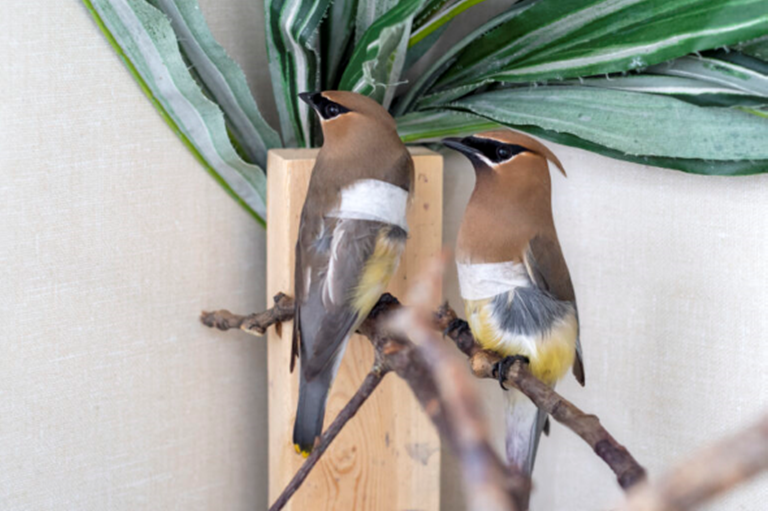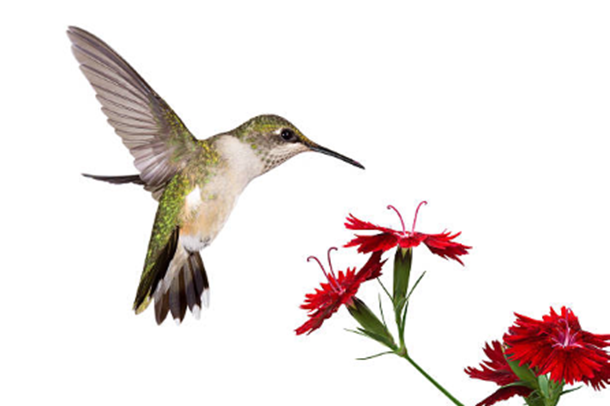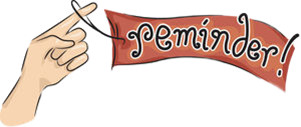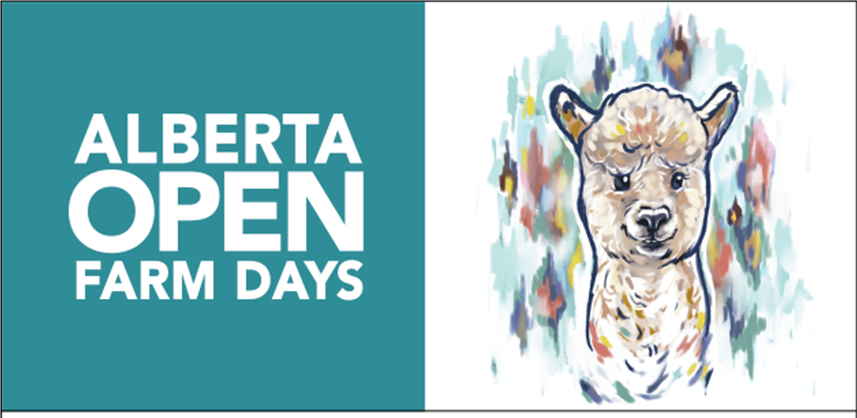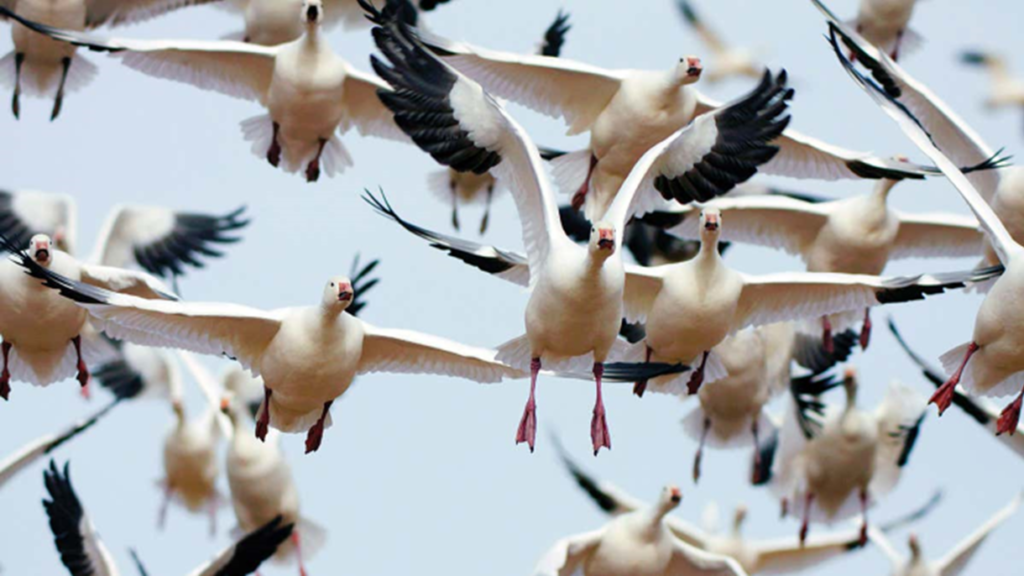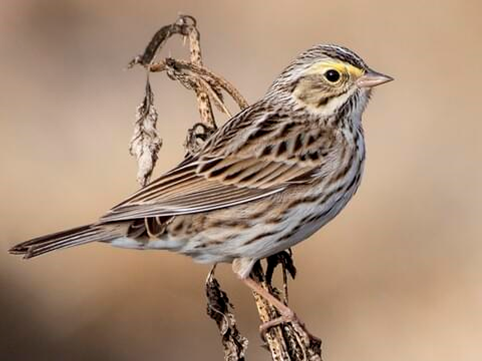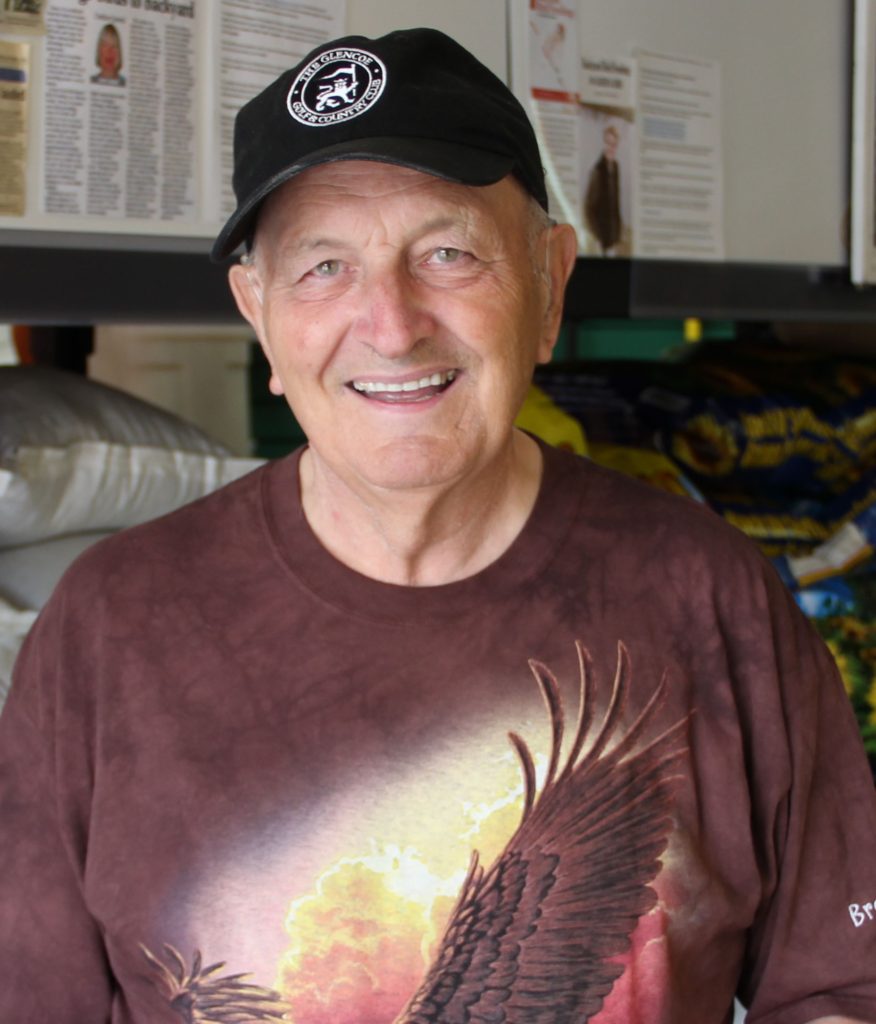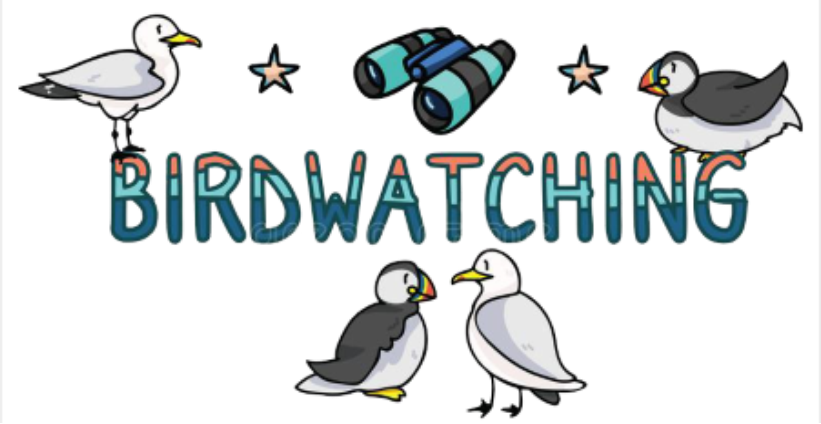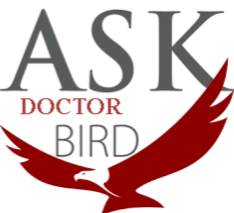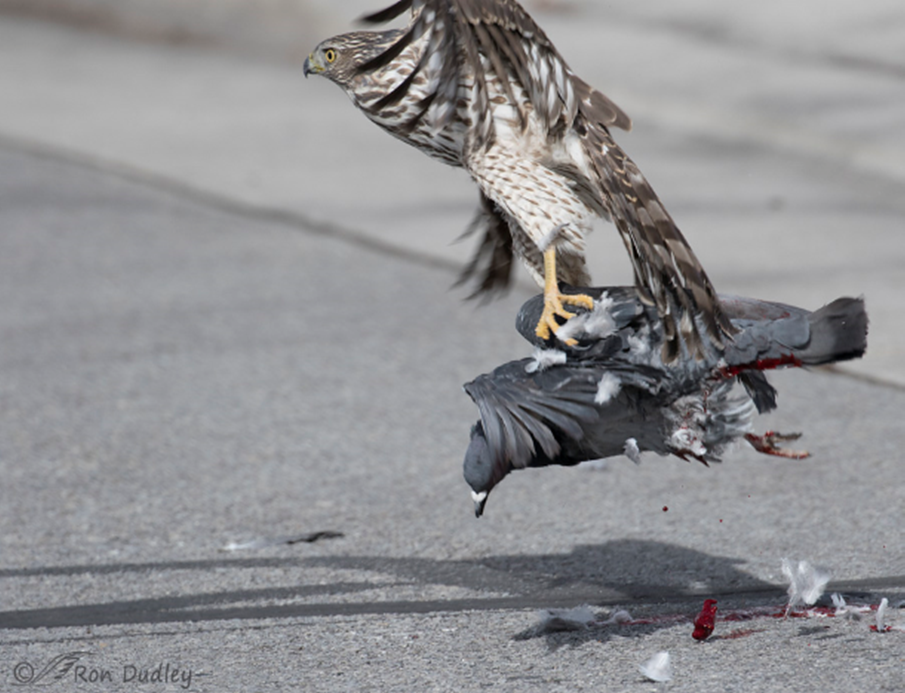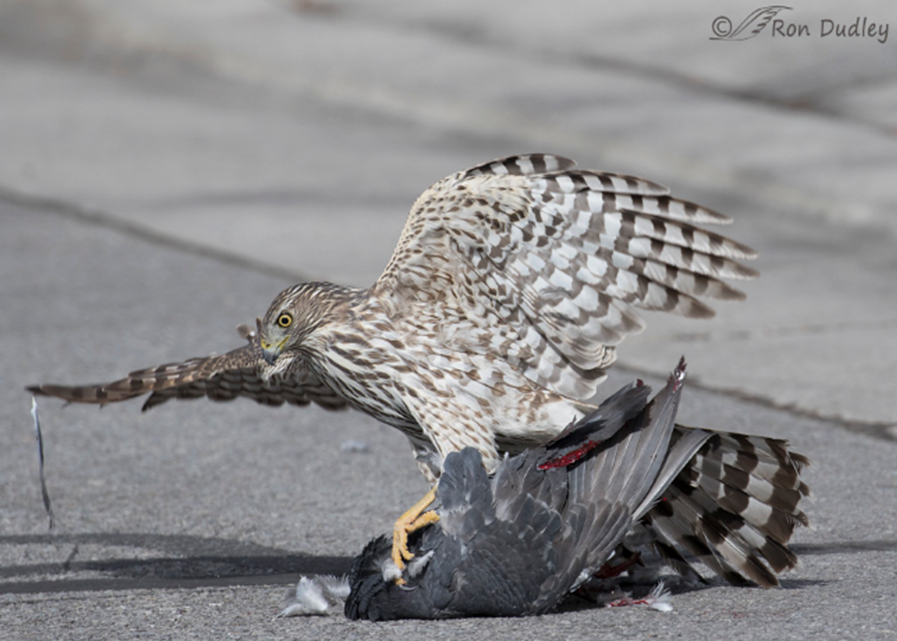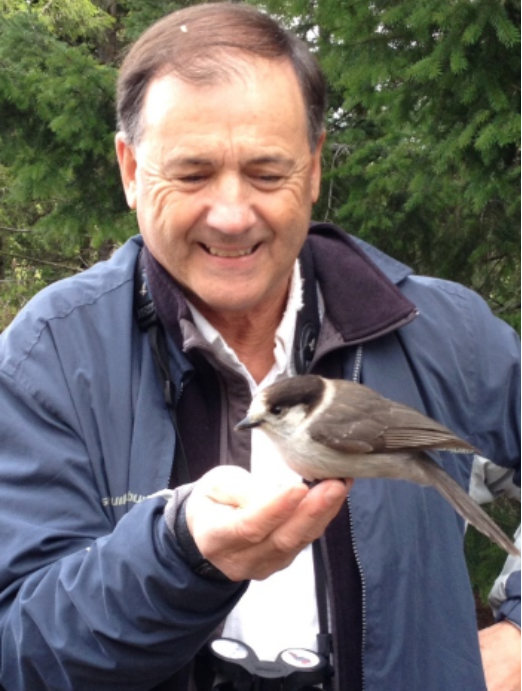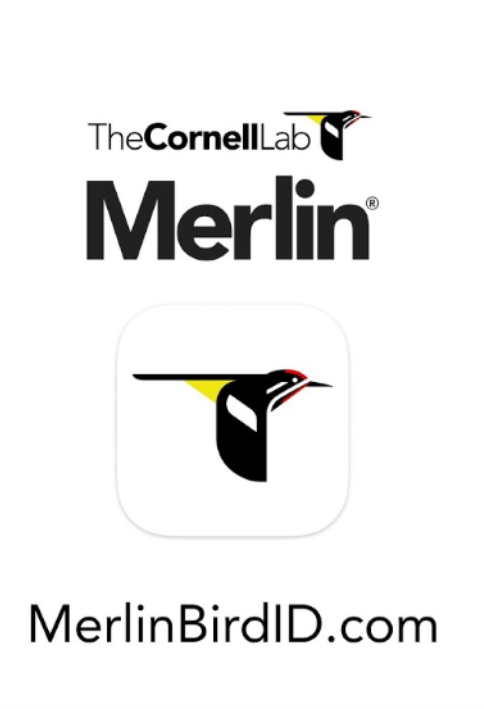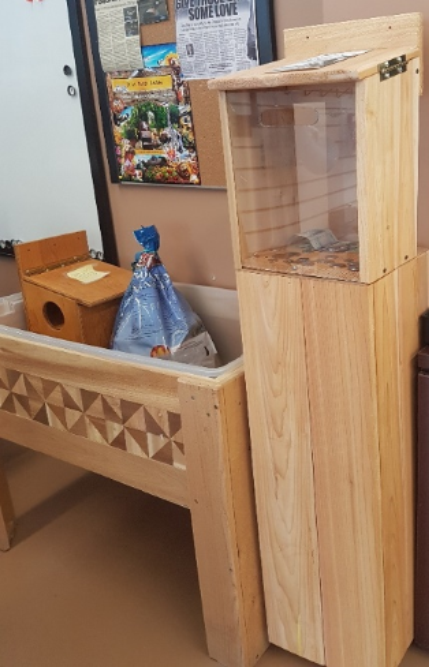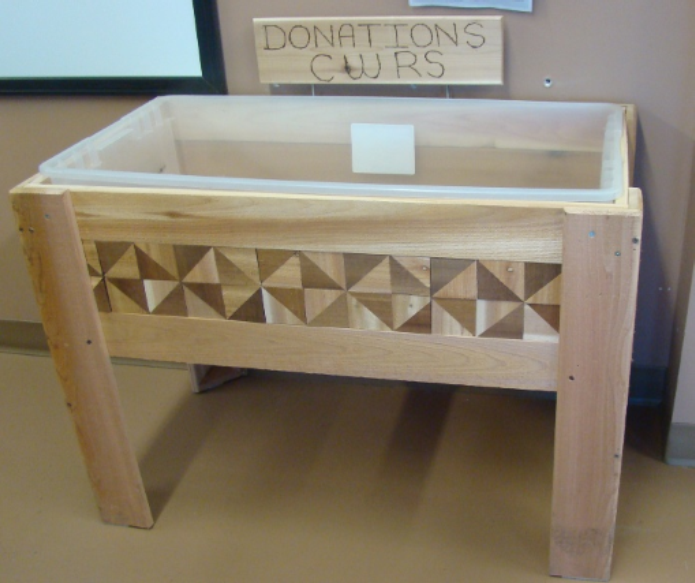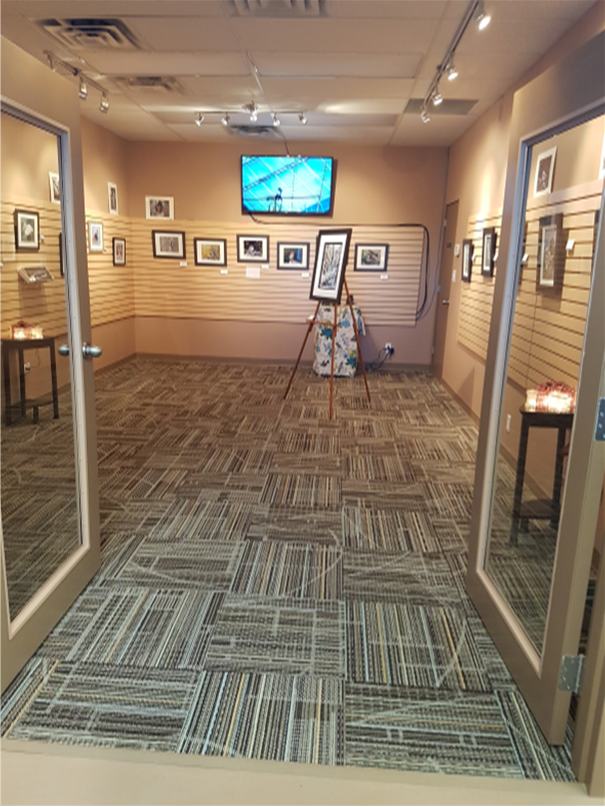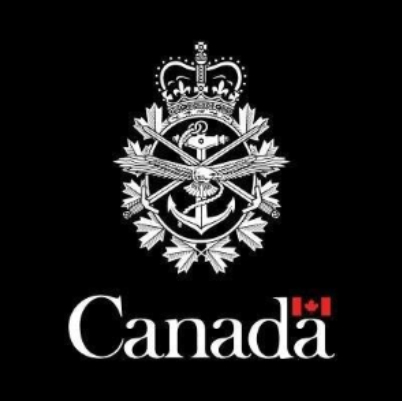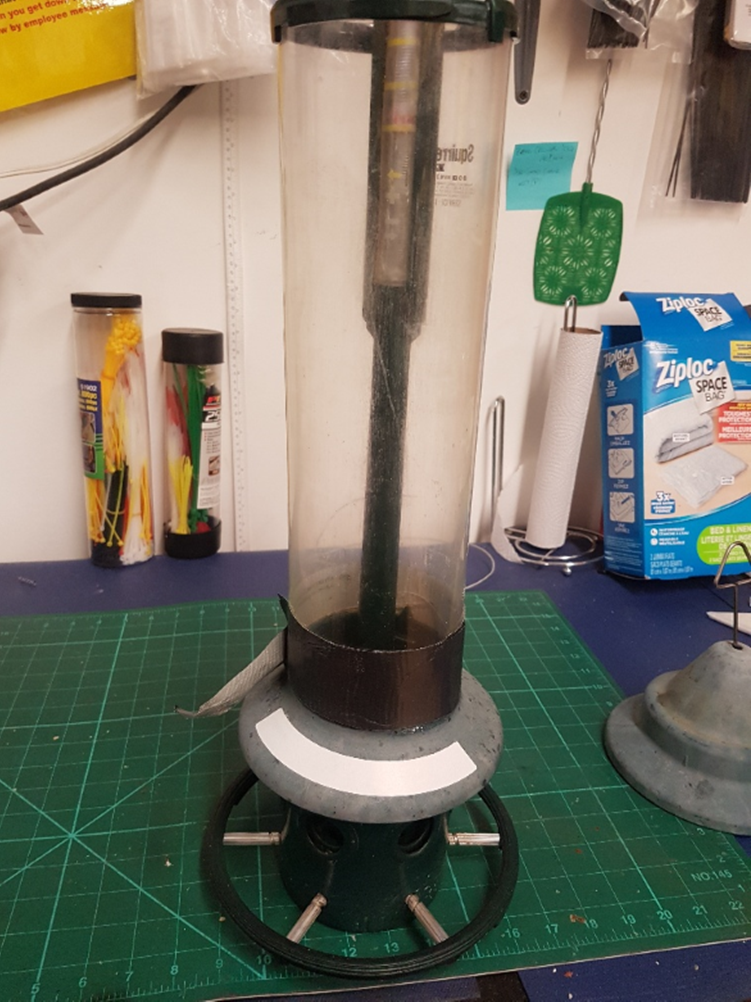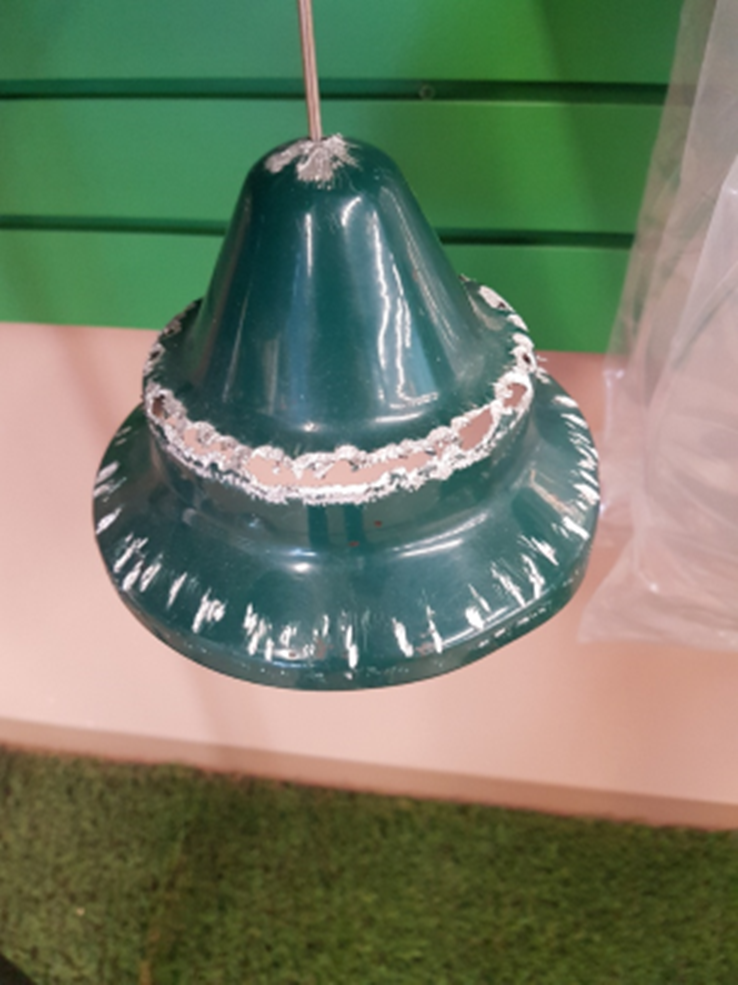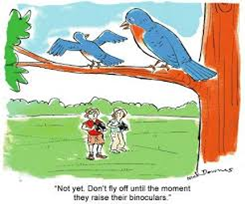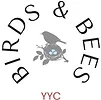LINK TO PDF NEWSLETTER DOWNLOAD

August 2024
Songbirds are at risk from many different sources including predation during nesting by other bird species, snakes, squirrels. Also roaming and feral cats take their toll on songbirds. But injury plays a huge role – but there are ways you can help.
COMMON REASONS FOR INJURIES:
By far the most prevalent injury waxwings endure is collisions with windows. These collisions can be detrimental, with a possibility of head or brain trauma, air sac punctures, broken bones and severe muscle injury to their flight muscles (Portland Audubon, 2021 & Wildlife Rescue Association, 2022).
HOW WE CAN HELP:
As waxwings (and the majority of bird species) have a hard time identifying glass window panes, making these windows more distinguishable will help reduce collision rates. This can effectively be done by treating windows using decals, tape, film, netting or screens.
Window collisions can also happen during the night, when the light inside the building is much brighter than their night-time surroundings. A “Lights Out” initiative has been put into place in a couple of large U.S. cities where the public is encouraged to turn off non-essential lights in an effort to avoid pointing birds towards windows.
If you do find a waxwing that collided with your window and is injured, we encourage you to reach out to AIWC at our wildlife hotline: 403-946-2361 for next steps.
CEDAR & BOHEMIAN WAXWINGS:
The ways of the Waxwings—April 28, 2024 Burt Glover
Waxwings do indeed have wax wings—well, partially so, anyway. Those stunning red tips are actually flattened appendages on the feathers, coloured by a waxy red secretion. The secretion derives from a carotenoid pigment, astaxanthin, which originates from the berries that they eat. The pink and red colours of flamingos, shrimp, salmon, lobsters, and others are due to eating algae that also produce this astaxanthin. Nobody is really sure of the function of those red tips—some speculate that they may play a role in mate selection. The number of these appendages appears to increase with age—individuals with zero to five waxy tips appear to be immature birds, while those with nine or more are thought to be older. Individuals with similar numbers of tips tend to associate as mates.
An especially curious and endearing aspect of Cedar waxwings is their highly social and egalitarian nature. With seemingly hundreds of waxwings swarming a berry tree, you’d expect fierce competition. Not so. They stage in one or two nearby trees and take turns flying to the berry tree. You’ll see one eat a berry or two, then fly back to the staging tree to make room for another to eat. Cedar waxwings are unique in the bird world for their regular habit of “sharing” berries. As one observer reported, “When the end of a twig holds a supply of berries that only one bird at a time can reach, members of a flock may line up along the twig and pass berries beak to beak down the line so that each bird gets a chance to eat.” As the focus of the flock suddenly changes to a dip and a drink of water, you will likewise see them taking turns at the birdbath. Afterward, the may be seen grooming one another. Such a spirit of cooperation!
University of California—Los Angeles (May 29, 2024)
Acute sense of touch helps hummingbirds hover near a flower without bumping into it
A new study shows they create a 3D body map when neurons in the forebrain fire as gusts of air touch their wings. Hummingbird flight mechanics have been well studied but far less is known about how their sense of touch helps them sip nectar from a flower without bumping into it. Most of what scientists know about how touch is processed in the brain comes from studies on mammals, but bird brains are very different from mammal brains. New research shows that touch and air pressure on the wings and legs activate specific clusters of neurons in two regions of the forebrain to create a map of their body, which may help hummingbirds make nuanced adjustments to flight. As gusts of air touch feathers on the leading edge of their wings and skin of their legs, receptors on their bill, face and head also work toward this end.
YEAR OF THE ALPACA
Open Farm Days will take place on
August 17th and 18th, 2024
For more information or to plan to visit farms, please visit
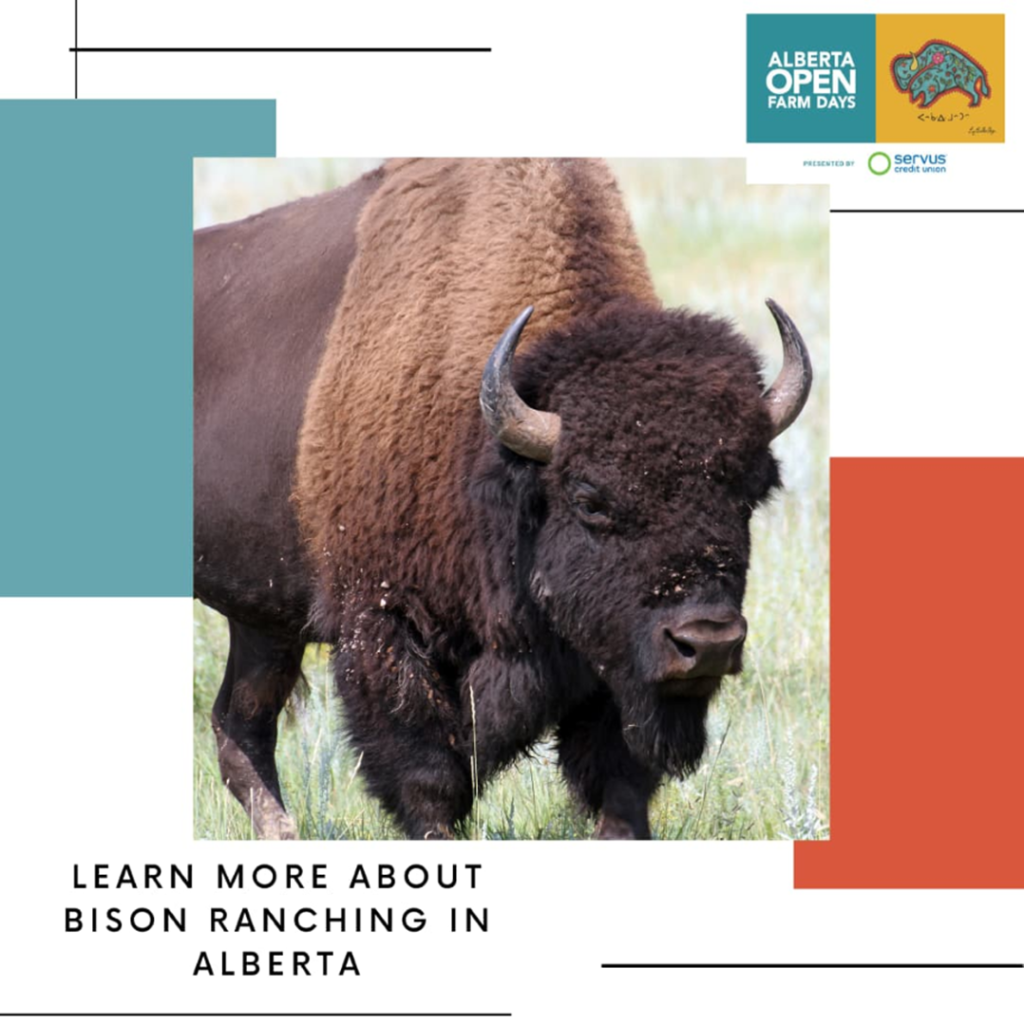
BISON SPOTLIGHT
This year Alberta Open Farm Days are shining a spotlight on one of Alberta’s keystone species, Bison, which has been a historically important part, not just of the eco-system in Alberta, but also a keystone ingredient for people that have lived on this land.
The buffalo was an incredibly important part of Indigenous people of the plains. The buffalo hunt was a part of a huge community event. The buffalo wasn’t just used as a food source, every part of the animal was used. Bones were turned into utensils and tools, sinew provided thread and the hide as clothing and for shelter and the meat for food.
Historically, there were over 30 million bison in North America, and that number was decimated in the late 1800’s from exploitation and the loss of natural habitat. Thanks to conservation efforts, wild bison is growing in Alberta.
Today, outside of wild bison habitats such as Elk Island National Park, Wood Buffalo National Park and Banff National Park, Alberta bison—deemed to be the cornerstone of the diversified livestock industry in Alberta—represents almost half of the Canadian bison herds on farms.
WINGS OF CHANGE – Part TWO – ALARM CALL
What the birds are telling us about climate change
Story by: Kurt Kleiner Western Alumni Magazine Spring 2024
External Risk Factors
Other research at Western has shown the effects even small levels of pollutants can have on birds. After the 2010 Deepwater Horizon oil spill in the Gulf of Mexico, the U.S. Department of Justice sued the oil company BP, and wanted to establish how much damage might have been done. As part of that effort, they approached Guglielmo.
He found even small traces of oil on the feathers could harm birds, increasing the energy it took to fly by and extra 25 to 40 per cent. “So it’s like flying around with a ball and chain. If you increase their flight cost by 25 or 40 per cent, they’re probably not going to make it to the breeding ground that year,” Guglielmo says.
Similarly, Guglielmo and Scott MacDougall-Shackleton, psychologist and co-director of AFAR, have both done studies that show even small amounts of mercury in the diet have harmful effects on birds. After just two weeks on a diet with trace amounts of mercury, for instance, their flight performance in the wind tunnel becomes unsteady and their maneuverability suffers.
MacDougall-Shackleton is especially interested in the dramatic changes birds go through during different seasons. “Birds essentially go through puberty over and over. They respond to longer days and other cues in the spring so they can activate their reproductive system and breed. In late summer or fall they totally shut down their reproductive system so they can prepare to migrate of in the case of non-migratory birds, prepare for winter. Testes shrink in males; ovaries shrink in females. They’re a totally different animal than in the breeding season.”
MacDougall-Shackleton points out these seasonal changes extend beyond breeding hormones. Some species like goldfinches look very different in winter and summer, changing the colour of their feathers. Other species change their social system. Chickadees live in flocks in the winter, but mated pairs will aggressively defend their breeding territory from other chickadees in the spring.
One of the changes that could make the most difference to birds is the shifting timing of the seasons, with winter starting later and spring coming earlier.
It turns out that different birds detect the seasons in different ways, MacDougall-Shackleton says.
“Some species are really locked into daylight, and they ignore everything else, like temperature and food availability. It’s only the long days that trigger them. Whereas other species, they respond to daylight, but in a much more flexible way.”
This matters because birds often time their egg laying so the chicks hatch when food will be most available. If the weather warms earlier, but they don’t change the time of their egg-laying, there will be less food and fewer chicks will survive.” Some species are really at risk, because they’re really specialized in a particular food, in a particular place, at a particular time. Those are the ones that are in the most trouble,” MacDougall-Shackleton says.
MacDougall-Shackleton conducted other research that showed how another likely effect of climate change—severe weather—can cause yet another problem for birds. He and PhD student Andrea Boyer put white-throated sparrows in the wind tunnel’s barometric chamber and lowered the air pressure in a way that mimicked what happens when a storm is coming. They found the sparrows could sense the pressure change. They responded by eating more and putting on fat, apparently preparing to sit out a storm that could prevent them finding food.
As long as the “storm” came no more than once a week, the birds were able to put on fat and use it when they needed it. But if storms hit twice a week, their metabolisms couldn’t keep up—they would eat more, but they couldn’t store the fat they needed. It’s an example of how climate change is likely to affect birds in all sorts of ways we haven’t yet predicted.
“Climate change is not just an overall warming,” Guglielmo warns. “It’s also more variability in weather.”
It has also meant more forest fires in some parts of the world, including North America. In recent years forest fires have raged across Canada and the United States during times birds are raising young and migrating. Smoke causes breathing and other health problems for humans, but could it impact bird populations?
“What I want to do is look at how forest fire smoke affects birds,” Guglielmo says. He and postdoctoral fellow Catherine Ivy, who specializes in bird respiration and high-altitude flight, are preparing to investigate it.
Watch for part 3 of Wings of Change – Alarm Call
What the birds are telling us about climate change
The Wild Bird Store Birding News September 2024 Edition
How the Savannah sparrow got its name:
The Savannah sparrow’s name sounds like a nod to its fondness for grassy areas, but this species was actually named by famed nineteenth century ornithologist Alexander Wilson for a specimen collected in Savannah, Georgia.

Jim will be back at the end of August and will be starting the bird walks again with a day trip to Frank Lake. Please see below for dates and information.
All participants on any bird walk must have purchased a ticket through our website – www.wildbirdstore.ca and present the ticket to Jim prior to the bird walk. The weather plays a big part in bird walks and Jim reminds participants to dress anticipating weather changes and to carry water to keep hydrated.
Saturday, August 31, 2024 Frank Lake area Day Trip
9:00am Leaving from Wild Bird Store rear parking lot. This is a day trip so please dress for weather changes, and bring a lunch!
Saturday, Sept 14, 2024 Inglewood Bird Sanctuary
9:00am Meet in the Inglewood parking lot, west side of the sanctuary. Please dress for weather changes and bring water.
Saturday, Sept 28, 2024 Bebo Grove
9:00am at the Bebo Grove parking lot. Please dress for weather changes and bring water !
Saturday, October 12, 2024 Carburn Park
9:00am Meet in Carburn Park parking lot. Please dress for weather changes and bring water !
Saturday, October 26, 2024 Eagle Watch Day Trip
9:00am Leaving from Wild Bird Store rear parking lot. Bring a Lunch!
NOTE: All vehicles require Kananaskis day or year pass. We can stop at visitor Center at park entrance to purchase one if needed. It is a per vehicle pass so carpoolers can share in cost of day pass if driver doesn’t have a valid year pass.
( I have a year pass so any passengers (3) I have are free.)
Below are a couple of suggestions as to where to go to see birds on your own while Jim is away—
CARBURN PARK is always a great destination for songbirds as well as waterfowl and shorebirds. But any of the destinations within Fish Creek Park are not only a wonderful way to spend the day, but sure to include lots of bird sightings.
INGLEWOOD BIRD SANCTUARY enjoy not only the history and the trails, but you just never know what birds you will see and be sure to enjoy the Nature Center
FRANK LAKE American white pelicans, Double-breasted cormorants, Grebes—the list goes on and on. Enjoy being up close viewing waterfowl and shorebirds from the boardwalk and blind. You are sure to add a few birds to your life list!
ELLIS BIRD FARM outside of Lacombe. Purple martins, Bluebirds, House wrens, American goldfinch and Hummingbirds just to mention a few. Enjoy the Nature Center and stop by the Tea House (best to make reservations for lunch).

We offer a discount if you return your 20 LB or 40 LB seed bags so that we can re-use them (sorry—not the Mother Nature bags which we cannot re-use), suet ball containers, or if you bring your own container or bag to fill . This discount is in addition to any other discount offered.
Question:
I have been watching a pair of nesting Cooper’s hawks preying upon doves and pigeons in my neighbourhood and it seems that these hawks seem to attack pigeons more from the east earlier in the day. So, I am wondering whether the hawks keep the sun behind them to surprise prey.
Response:
I gather that you are suggesting that Cooper’s hawks keep the sun behind them to surprise prey, much like fighter pilots did in both World Wars. Knowing just how cunning Cooper’s hawks are, I would not at all be surprised to hear that they might use the sun in this manner. Just to be sure though, I contacted a buddy in Wisconsin, Dr. Bob Rosenfield, who has literally written the book on this bird. He replied that Cooper’s hawks have indeed evolved to hunt in structurally complex habitats and often use buildings and other structures, both manmade and natural, to shield their approach. However, he had not personally seen them or even heard of them using the sun. But he did agree that it was a plausible idea. However, I read a paper published in 2015 describing a complex study of hunting goshawks, a closely related species that prefers to hunt somewhat larger prey like grouse and hares. The scientists used a specially mounted head camera to examine how these hawks hunt their prey using their head movements and vision. Nothing was mentioned about using the sun. My guess though is that bird-hunting raptors like Peregrine falcons and perhaps even the smaller merlin’s, which circle up high in the sky before engaging in death-defying stoops to catch prey on the wing, would be much more prone to using the sun.
David M. Bird, Ph.D., Emeritus Professor of Wildlife Biology, McGill University www.askprofessorbird.com

David M. Bird is Emeritus Professor of Wildlife Biology and the former Director of the Avian Science and Conservation Centre at McGill University. As a past-president of the Society of Canadian Ornithologists, a former board member with Birds Canada, a Fellow of both the American Ornithological Society and the International Ornithological Union, he has received several awards for his conservation and public education efforts. Dr. Bird is a regular columnist on birds for Bird Watcher’s Digest and Canadian Wildlife magazines and is the author of several books and over 200 peer-reviewed scientific publications. He is the consultant editor for multiple editions of DK Canada’s Birds of Canada, Birds of Eastern Canada, Birds of Western Canada, and Pocket Birds of Canada. To know more about him, visit www.askprofessorbird.com or email david.bird@mcgill.ca.
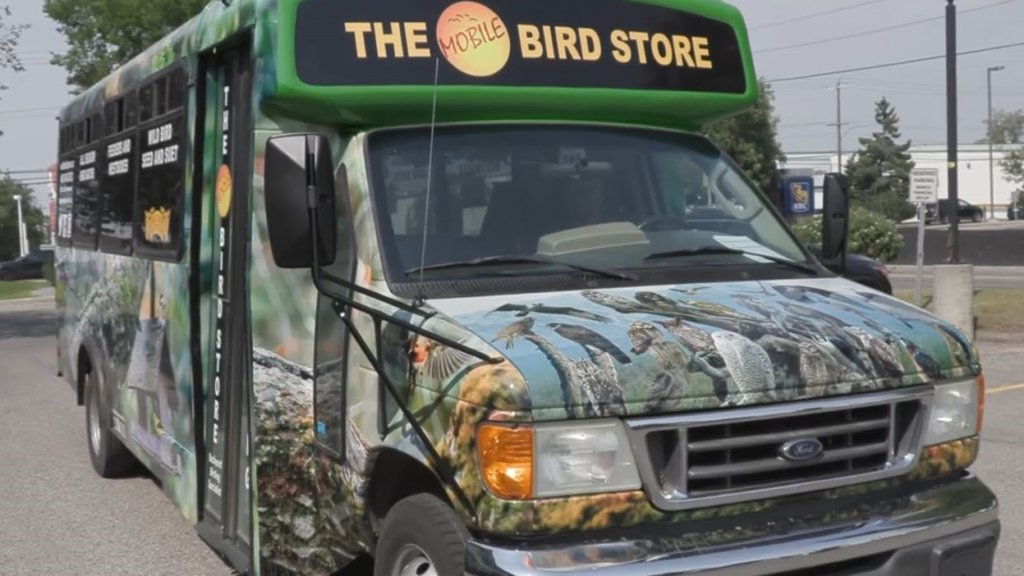

Wildwood Community Centre (4411 Spruce Drive SW): Every Tuesday 3:00pm to 6:00pm
Crowfoot Arena (corner of John Laurie & Nosehill Drive NW: Every Wednesday 2:00pm to 5:30pm
Please place orders by 12:00 noon the day before the truck is on location
Text us @ (403)701-4571 OR email us at orders@wildbirdstore.ca
Earn and redeem customer loyalty points on the Mobile Seed Truck

DELIVERY: Deliveries will still be made on Thursdays ONLY. Please phone the store at (403) 640-2632 any day prior to 12:00 noon on the Wednesday before your delivery; place and pay for your delivery. Please phone with your order as early as possible to avoid disappointment. If you have any special instructions please do not forget to inform us when you place your order.
PLEASE NOTE: STARTING IN MAY WE WILL BE GOING TO EVERY TWO WEEK DELIVERY. JUNE 13 and 27
THE DELIVERY CHARGE WILL BE $10
MINIMUM ORDER FOR DELIVERY $25.
Do you need help attracting birds to your backyard?
Do you want advise on designing a backyard habitat for your feathered/winged friends?
Do you have a problem in your backyard we can help solve?
The Wild Bird Store in partnership with Andrew Barnes, now providing at home wild bird consulting service.
Specializing in helping you and your property become Wild Bird friendly for maximum results.
Services offered will include:
Bird feeder(s) recommendations for species focus and seed types
· Type(s) of seed and for which species it will be best suited
· Preferred location for maximum results
· Bird feeder accessories
· Hummingbird feeders and accessories
Nesting
· Nest box selection for native species—including all cavity nesting and platform species for Alberta
· Preferred location for nest boxes
· Maintenance tips
· Advice on how to deter invasive species (House sparrows and European starlings)
Watering needs
· Bird baths
· Heaters and heated baths
· Accessories including drippers and bubblers
· Location dos and don’ts
· Maintenance tips
Bat Houses/Chambers
· Location requirements
· Housing styles—including single vs multiple chambers
After each visit all discussion points and recommendations will be provided along with a 10% OFF coupon to be used at the Wild Bird Store on your next purchase.
PLEASE NOTE: 10% coupon is only valid for a one-time purchase and must be presented at time of purchase. In-store ONLY. ( All Discount restrictions apply)
For further information, pricing and scheduling, please contact
Andrew Barnes cell # (403) 923-8121 (call or text)
Email: birdsbeesyyc@gmail.com
Have you checked out the Merlin app? Would you like a demonstration on how they will help you to identify birds? Stop by The Wild Bird Store during regular business hours and staff will be happy to show you how the app will enable you to identify birds in various ways.
Identify Bird Songs and Calls
Identify Birds by your Photos
Save Birds to Your Life List
Explore lists of birds near your location
DONATIONS
Located at The Wild Bird Store (near the seed bins). We collect your cash as well as “wishlist” donations and arrange to deliver them to local wildlife organizations including Calgary Wildlife Rehabilitation, Alberta Institute of Conservation and Ellis Bird Farm.
We ask for your support quarterly for each of these organizations.
For June, July and August, 2024 your donations will go to:
Alberta Institute for Wildlife Conservation
Thank you for your support
The Wild Bird Store offers the “Book Nook” as a gathering place for your next meeting. The room is for rent for $50.00 +GST which includes the set up of the chairs, video equipment is available and coffee, tea and water are available.
Please contact info@wildbirdstore.ca for more information or to reserve your spot.
Options for shopping at the Wild Bird Store
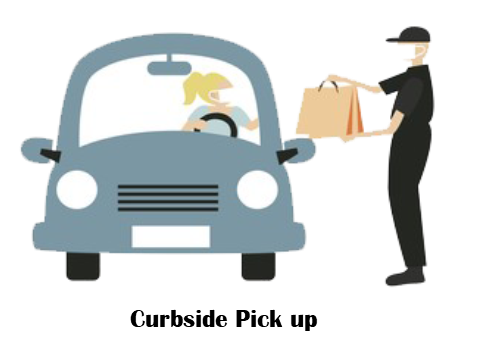
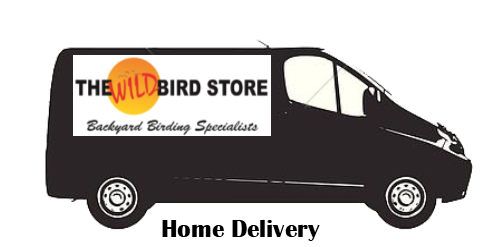
PLEASE NOTE: STARTING IN MAY WE WILL BE GOING TO EVERY TWO WEEK DELIVERY.
JULY 11 and 25
THE DELIVERY CHARGE WILL BE $10. MINIMUM $25 ORDER FOR DELIVERY.
We deliver every other week on Thursdays.
Store hours are:
10:00am to 5:00pm Monday through Saturday
We offer a discount if you return your 20 LB or 40 LB seed bags so that we can re-use them (sorry—not the Mother Nature bags which we cannot re-use), suet ball containers, or if you bring your own container or bag to fill . This discount is in addition to any other discount offered.
Write a Google review on your experience at The Wild Bird Store, and as a thank you, we will give you 100 customer loyalty points ($5.00 value). To get a promo code, kindly email info@wildbirdstore.ca
(one Google review per customer)
Earn 200 customer loyalty points ($10.00 value) by referring a friend, acquaintance or fellow birder.
Please visit the store to get a promo code.
Combining our Seniors 10% discount with the Loyalty Program. (Excludes “sales” items, books & optics).
Discount for membership 10% discount for members of Fish Creek Park, AIWC, Priddis Golf Club, Nature Calgary, Sandy Cross Conservation, Springbank Garden Club and Millarville Horticultural Society. Must present valid membership card at time of purchase.
Discount for Military Members & Veterans 10% discount on
purchases in-store or on Mobile Seed Truck (sorry—excludes “sales”
items, books, optics and consignment items)
Does your Aspects or Squirrel Buster feeder need some replacement parts?
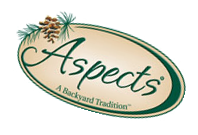
Did you know that we can repair/replace parts and make it look like brand new?

5901 3rd Street S.E.,
Calgary, AB T2H 1K3
email: info@wildbirdstore.ca
(403) 640 2632
The Store is open Tuesday through Saturday 10:00am to 5:00pm
The Wild Bird Store will be closed on Monday, August 5th to celebrate Heritage Day

We are CLOSED Sundays, and ALL Statutory holidays for Faith, Family and Friends.
We still offer curbside pickup every day we are open and delivery service on Thursdays.
FOLLOW US ON:
Facebook @thewildbirdstoreyyc
Twitter @wildbirdstoreyyc
Go to YouTube, type in the search bar “The Wild Bird Store” to watch our videos and to help us become more visible . Be sure to click on “Subscribe” before you leave the page.

